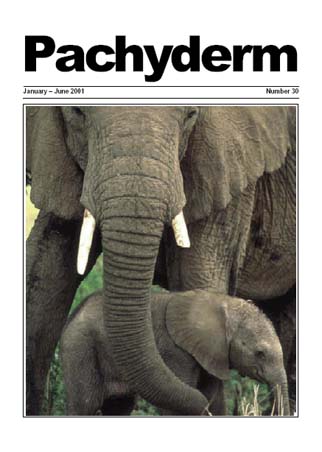Dual-season crop damage by elephants in eastern Zambezi Valley, Zimbabwe
Abstract
Reviews an elephant -focused crop damage reporting scheme, developed and tested for two consecutive years in Muzarabani District in Zimbabwe's eastern Zambezi Valley. The scheme, which involves reports collected by an enumerator who visits the site of every incident in his ward, assesses wet and dry season crop damage, identifies spatial and and temporal patterns, and develops a measure of serverity for each incident. Within the Muzarabani study area the majority of elephant crop raiding incidents occurred during the wet season. Dry season crop damage, considered to be unusual, was found to be relatively common. Wet season crop damage occurred primarily in farmland along the edge of a protected wildlife area, while dry season crop damage occurred along the major rivers in the District. Although fewer in number the dry season incidents were generally more severe than wet season incidents. Crop damage in the dry season may have a greater impact on rural farmers since that is when food is scarce. The system of crop damage reporting developed in this study provided objective and practical management information for the local district council and has been adopted by the AfESG Human-Elephant Conflict Taskforce.
Downloads
Published
How to Cite
Issue
Section
License
Copyright (c) 2001 Guy E. Parker, Ferrel V. Osborn

This work is licensed under a Creative Commons Attribution-NonCommercial 4.0 International License.




